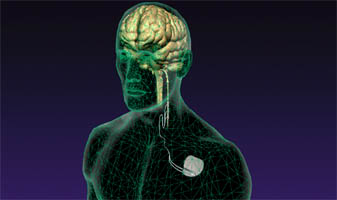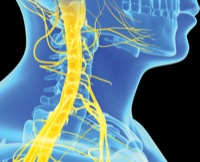From: Joyce and Herbert Stein
[mailto:fabrik@bellsouth.net]
Sent: Friday, June 07, 2013 12:04 PM
To: Daniel Moore
Cc: Dr. Paul Goodnick; Dr. Ely Pelta; Dr. Charles Conway; Dr. Mark
George; Dr. Ziad Nahas; Dr. Yvette Sheline; Dr. Harold Sackeim; Dr. Steve Balt;
Craig Malisow; Margaret Sullivan; Howard Finkelstein; Dr. John Rush; Dr. Werner
Doyle; Dr. Istvan Takacs; Dr. John M. Nardo; Dr. Jeffrey Paley
Subject: Congratulations...
Dear Dan,
I’d like to congratulate you on your outstanding and
record breaking profitable quarter. There is no doubt I would believe in
anyone’s mind that your stewardship has brought Cyberonics from the brink of
disaster to a remarkable financial recovery and profitability.
At the same time I have been patient as I awaited CMS
response to your most recent request for depression approval. CMS having
declined this recent request I cannot wait any longer. I have just
embarked upon a campaign covered in the petition I’ve pasted below. I am
making my best efforts to put my campaign in the front of as many governmental
officials, President of the United States, Senators, Congress people, FDA, CMS
and other governmental agencies, news media including newspapers, magazines and
television, the APA and various medical associations, as well as the general
public for support to get you and your company to honor the previous public
commitments of the former CEO and to standup and be morally responsible and
adherent to the desperate needs of these former study subjects
hung-out-to-dry.
Please also understand I still remain very supportive
of VNS Therapy for Depression as a viable treatment option to be considered by
patients in collaboration with one’s attending healthcare practitioner.
I strongly feel at this point in time although the FDA
had approved the therapy for depression the only way the therapy will overcome
CMS denial is to re-institute a new properly prepared double-blind study and
not one following a drug protocol. A study more suited for a
neuro-modulation device requiring considerably more time to demonstrate
efficacy. But then again, I’m sure you already know that and based upon
Dr. Conway’s demonstrated favorable results you would have someone very capable
of structuring the new study and protocol and someone already compassionate to
the plight of the current study subjects. Although, I cannot wait any
longer.
Joyce has done remarkably well over these past 13
years in terms of no depression. Joyce was last re-implanted in January
2005. This coming January will be 8 years of service on her 2nd
and current prosthesis, if it lasts that long, You have put us and others
former study subjects in a very precarious, tenuous and extremely stressful
situation.
I have inquired and been told I cannot undertake any
legal action at this time against Cyberonics based upon a future event.
That is until Joyce’s battery is depleted and our insurance carrier (United
Healthcare) and your company formally denies covering Joyce’s pulse generator
replacement surgery.
Please understand my position and rest assured that
unless something can be favorable accomplished for these former study subjects
and Joyce as well whereby you reconsider your position before Joyce’s need for
replacement that I shall continue my campaign to make an all-out effort to make
Cyberonics both legally and financially responsible for breaking and reneging
on its previous publicly stated commitments (“Lifetime Reimbursement Guarantee
for All TRD IDE Study Patients…”) while also making sure the news media and
general public stays informed as best I can.
As always I wish you continued success and wellness
for you and yours.
Sincerely,
Herb
Cc: Benedict Carey, New York Times
Barnaby J. Feder, New
York Times
P.S. Doc Mickey and Doc Steve I would hope that you
take this matter seriously under consideration by sharing our petition and
campaign on your respective blog sites and encouraging your respective
readership to sign on with us.
////////////////////////////////////////////////////////////////////////////////////////////////////////////////////////////////////////////////////////////////////////////////////////////////////////////////////////////////////////////////////////////////////////////////////
Caution: Do not
volunteer for any medical research until you read this petition.
VNS THERAPY FOR DEPRESSION (VAGUS NERVE STIMULATION)
The Petition:
The purpose of this petition is quite simple and straight forward, that is to
obtain health insurance coverage for a group of volunteer medical study
subjects for an FDA (Food and Drug Administration) approved therapy and to warn
all medical volunteer study subjects to obtain in writing who is responsible
for their medical care if CMS (Centers for Medicare and Medicaid Services)
and/or one’s insurance company denies coverage. FDA approval does not mean or
insure health insurance coverage.
Background:
On or about 1997 Cyberonics, Inc. received FDA approval for VNS Therapy for
Epilepsy. On or about 1998 Cyberonics additionally got the go ahead to
institute an open pilot study (D-01) for the same VNS Therapy for Depression.
The D-01 was instituted as a result of Epilepsy studies and patients not only
reporting decreases in number and severity of their seizure activity but also
diminishing depression episodes.
Through the assistance and caring of my spouse’s then attending psychiatrist,
Dr. Paul Goodnick, Joyce was enrolled in the D-01 open study as study subject
#46 at MUSC (Medical University of South Carolina) under the directorship of
Dr. Mark George and Dr. Ziad Nahas. She was implanted with the device on
December 13, 1999.
In our desperation at the time and after some 36 years of Joyce’s continuing
severe depressive episodes and suicidal attempts and failed therapy trials as
well as numerous ineffective medications and refractory treatments, she signed
the papers for this newest neuro-modulation study.
We carefully noted that death was a possible outcome. We also noted once FDA
approved, Cyberonics would no longer be responsible for her medical care.
What we didn’t know or realize at the time of signing nor did any of the study
volunteers and worse yet the fact that all the other affiliated parties and
medical professionals didn’t take into consideration when structuring any of
these depression studies that with FDA approval it ended Cyberonics
responsibility for medical care but it did not insure Medicare/Medicaid and/or
health insurance coverage for the study subjects. Nor did anyone know despite FDA
approval that CMS denying coverage for this medical device (historically the
first time such an event took place) left these volunteer patients in a
Catch-22 with an implanted medical device and some with paid health insurance
but still denied coverage for this particular therapy.
VNS Therapy, VNS depression studies, Cyberonics, the former CEO Robert P.
(“Skip”) Cummins and the FDA have all been steeped in controversy and maligned
as well. Yet and at the time, when I brought this loophole to the attention of
Mr. Cummins he assured me “not to worry.”
Mr. Cummins honored his words and to his credit, took action and made a
responsible and morally correct pronouncement. He acted and assured the
depression study subjects would have health coverage for the VNS Therapy if
their own health insurance and/or Medicare/Medicaid carriers denied to cover
the therapy by publicly announcing on January 18, 2006:
“Lifetime Reimbursement Guarantee for All TRD IDE Study Patients and $15
Million TRD Indigent Care Program…Cyberonics has taken the unprecedented steps
with its lifetime reimbursement guarantee for study patients and its $15
million TRD Indigent Access Program, to ensure that study patients and indigent
Americans with TRD have fully informed access to VNS Therapy.”
Similar information was also entered into the Cyberonics corporate 8-K SEC
filings.
Mr. Skip Cummins is no longer with Cyberonics and the current management has
reneged upon their oral and published contract, commitments and statements. The
company has refused to pay for the servicing, care and replacement of their
implantable devices for those volunteer study subjects (patients) wanting to
continue the therapy.
A number of these volunteers, who were devastatingly ill, are benefiting
long-term and living reasonable quality of lives as a result of VNS Therapy.
These patients are being denied health insurance coverage by their own paid for
carriers as well as Medicare/Medicaid despite the fact the therapy works for
them and was FDA approved.
Adding to the illogic of this conundrum is the fact the very same therapy is
covered by Medicare/Medicaid and health insurance carriers for epilepsy and
that some 200 leading psychiatric professionals had commented during the
write-in period to CMS that the therapy should be approved for coverage based
upon their personal patient treatment experiences and that conventional
therapies are ineffective for this unique population of seriously ill patients.
In the infinite “lack” of wisdom on the part of our government’s convoluted
working agencies to protect us the FDA, CMS as well as the sponsor and the oath
taken by all the medical researchers (to do no harm) no one thought to ask or
provide for health care and replacement coverage for these medical volunteers. Thereby
leaving these study subjects (my spouse included) with a costly implanted
medical device and therapy that no study subject rightfully or morally should
be paying for out-of-pocket especially since we have health insurance.
CMS in their denial of coverage should have rightfully grandfathered in the
existing study subjects. They did not.
One last and most important point; Joyce and I still remain advocates for VNS
Therapy for Depression as a potentially viable treatment option to be
considered by a reasonably informed patient.
As a result of this therapy my spouse has been depression free approaching 14
years. We no longer discuss depression. She takes no antidepressants. Our major
concern is to continue maintaining her past 14 year wellness utilizing the same
VNS Therapy and to have our paid for health insurance carrier, Cyberonics
and/or any other responsible party honor their commitments to cover Joyce’s
medical expenses and that of the other study subjects as they do for epilepsy.
At the same time to once again caution and make aware to other volunteer
medical study subjects in any other kind of study to not get caught up in a
very stressful similar and costly situation and negligent oversight.
Conclusion:
Please sign and join this petition to correct this medical injustice:
I am requesting The United States President, Senate, Congress, CMS, state and
local governmental officials, Health Insurance Industry, Cyberonics and all
medical professionals especially those having anything to do with VNS Therapy
for Depression to do the responsible and morally correct thing by exerting
pressure upon any of the responsible parties to correct this oversight and
injustice by helping these volunteer study subjects (patients) to obtain
medical coverage and to insure future medical study volunteers are not faced
with a similar predicament.
Thank you all for your consideration in reading this petition and joining in to
obtain health care for all medical research study volunteers.
Sincerely,
Herbert Stein, caregiver and long-time support person to my spouse, Joyce Stein
http://www.vnstherapy-herb.blogspot.com
---------------------------------------------------------------
NOTICE OF CONFIDENTIALITY /
Disclaimer
---------------------------------------------------------------
Disclaimer: This E-Mail is covered by
the Electronic Communications Privacy Act, 18 U.S.C. §§ 2510-2521 and is
legally privileged. The information contained in this E-Mail is intended only
for use of the individual or entity named above. If the reader of this message
is not the intended recipient, or the employee or agent responsible for
delivering it to the intended recipient, you are hereby notified that any
dissemination, distribution, or copying of this communication is strictly
prohibited. If you receive this E-Mail in error, please notify the sender immediately
at the email address and/or phone number above and delete the information from
your computer. Please do not copy or use it for any purpose nor disclose its
contents to any other person.
CONFIDENTIALITY NOTICE: This e-mail
message including attachments, if any, is intended only for the person or
entity to which it is addressed and may contain confidential and/or privileged
material. Any unauthorized review, use, disclosure or distribution is
prohibited. If you are not the intended recipient, please contact the sender by
reply e-mail, destroy all copies of the original message, and do not
disseminate it further. If you are the intended recipient but do not wish to
receive communications through this medium, please advise the sender
immediately.








